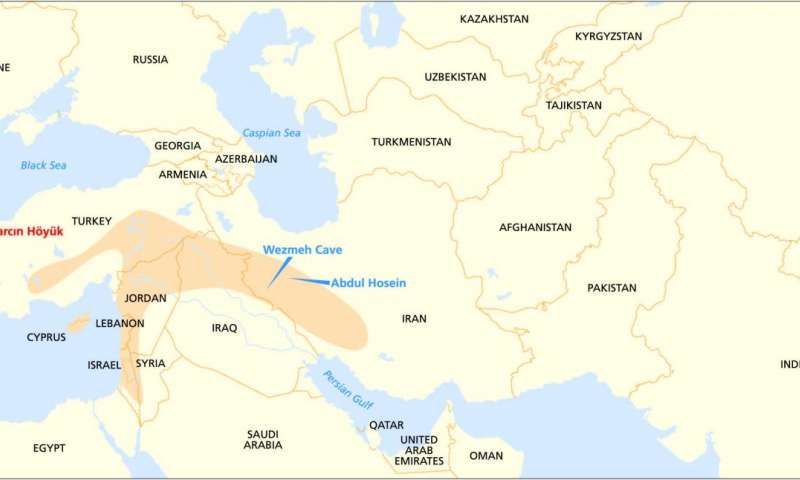This one is a bit of a surprise. Just as we were about to accept that early farming evolved in the Fertile Crescent and the descendants outbred hunter gatherers and gradually replaced them – or hybridised (and then went on to colonise large areas of the world from Europe to the Indian subcontinent) genetic research appears to have come up with something unexpected. The Fertile Crescent has been regarded as the cradle of agriculture for a long time – but is that view justified? It seems scientists have detected at least two groups of people with different DNA – and one group is thought to have expanded westwards and the other eastwards. The study is published in the journal Science (July 14th 2016). See also https://phys.org/print387712791.html
 Earlier in the year the same team had a paper published in the journal PNAS which said that European farmers came by way of western Anatolia (modern Turkey). They assumed they had originally come from points further east – at older sites in the Fertile Crescent (Syria, SE Anatolia, Iraq and Iran) where farming goes back 10,000 years. However, the DNA from two different localities (ancient Iranian settlements) show otherwise. The two groups, it is alleged, separated from each other 45,000 years ago (or longer) – which appears to be an astonishingly long time. It indicates, it is said, keeping to the Out of Africa narrative, going there own ways shortly after entering western Asia (but is this a necessary conclusion?)
Earlier in the year the same team had a paper published in the journal PNAS which said that European farmers came by way of western Anatolia (modern Turkey). They assumed they had originally come from points further east – at older sites in the Fertile Crescent (Syria, SE Anatolia, Iraq and Iran) where farming goes back 10,000 years. However, the DNA from two different localities (ancient Iranian settlements) show otherwise. The two groups, it is alleged, separated from each other 45,000 years ago (or longer) – which appears to be an astonishingly long time. It indicates, it is said, keeping to the Out of Africa narrative, going there own ways shortly after entering western Asia (but is this a necessary conclusion?)
One may wonder if there was some kind of bottle neck – a catastrophe that reduced the human population (and left them temporarily isolated from each other). The news release asks – did they look different? Did they speak a different language? What is inferred is that the people living in Anatolia were differnt to those living further east – and the difference is long seated. Interestingly, the news release than says it is unlikely farming was begun by two different people – one must have influenced the other. Is this the proper way to look at it as in a catastrophist scenario the situation would have differed somewhat. Farming is usually defined as keeping animlas and growing cereals such as emmer wheat and barley. Bread and beer, and meat. The best things in life. The idea of growing cereal grains could have occurred to diverse human groups – after all maize was grown in the Americas and rice in East Asia, for example. If there was a lack of game keeping your own animals might have seemed attractive. Wild cereals were probably already part of the human diet and if food was scarce as a result of catastrophism grains would seem like a good idea. They grow quickly and would be clearly visible to multiple groups after extensive landscape fires – the first plants to grow out of the burnt layer of vegetation. You would not be able not to notice them. The idea of two different peoples adopting farming is not impossible – and is fully possible (especially as interaction of some kind may have occurred). Obviously, the DNA findings are at the moment selective and a wider sample is required (from fossil human bones of the relevant period).
